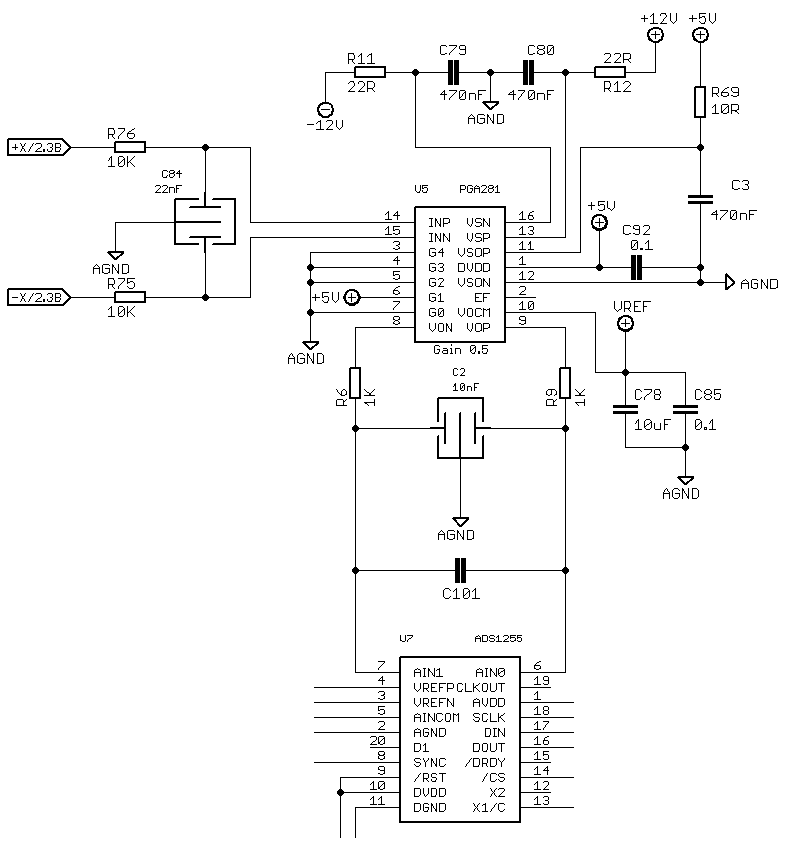Hello there,
I'm using an ads1256 converter and a PGA281 front-end configured as Vout = 0.5 * Vin.
Using AdcPro I observe 1bit difference in the ENOB measurement from the following set ups:
- ADS1256 (AIN0 AIN1), no front end AIN0, AIN1 shortcircuited --> 23.8 ENO
- ADS1256 (AIN0 AIN1), PGA281 front end (Vout = Vin * 0.5), PGA281 inputs shortcircuited ---> 22.8 ENOB
It seems that PGA281, used as attenuator, is introducing noise and is degrading the RMS noise.
I understand that ENOB it's the same because in the second set-up FSR is 20V and not 10V as in the first, but I'm wondering if there is something else..
Regards,
Paolo


